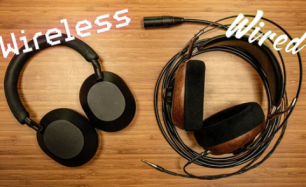The Future of Spatial Audio in Gaming Why sound is becoming just as immersive as visuals
Gaming has evolved dramatically over the past decade—from pixelated screens to hyper-realistic worlds that feel more cinematic than digital. But while visuals often steal the spotlight, audio has quietly become one of the most transformative elements of modern gameplay. Enter: spatial audio, a technology that’s set to redefine how we experience sound in games.No longer confined to left-right stereo channels, spatial audio creates a three-dimensional soundscape where direction, distance, and movement are vividly rendered—as if you’re truly inside the game. And as we look ahead, the future of spatial audio is only getting louder, smarter, and more immersive.

1. What Is Spatial Audio—And Why Does It Matter?
Spatial audio (sometimes called 3D or immersive audio) simulates how we hear sounds in real life. In a game, this means that footsteps approaching from behind, gunfire echoing in a distant hallway, or raindrops hitting a roof above you all sound exactly where they should—in space.
Unlike traditional stereo, which splits audio into two channels, spatial audio uses complex algorithms and head-related transfer functions (HRTFs) to mimic how sound waves interact with your ears, head, and body. The result? Heightened realism, enhanced awareness, and deeper emotional engagement.
2. A Competitive Edge in Gameplay
For competitive gamers, spatial audio isn’t just a luxury—it’s a weapon. Accurate directional sound can be the difference between reacting to an ambush or falling into one. In titles like Call of Duty, Fortnite, and Valorant, players use sound cues—like reload clicks, footsteps, or enemy chatter—to strategize and survive.
With spatial audio, these cues become more detailed and directional, giving players a tactical advantage by helping them pinpoint exactly where threats are coming from.
3. VR, AR, and the Rise of Immersive Soundscapes
As virtual and augmented reality gaming grows, the role of spatial audio becomes even more critical. In a VR headset, realistic visuals need equally immersive sound to complete the illusion. Audio that shifts naturally as you move your head—getting louder as you approach an object or fading when you turn away—deepens the sense of presence.
Games like Half-Life: Alyx and Resident Evil Village VR show just how powerful spatial audio can be in amplifying emotion, suspense, and realism. Moving forward, it will be central to storytelling, gameplay, and world-building in next-gen experiences.

4. The Technology Powering the Future
Major players like Dolby Atmos, DTS:X, and Sony’s Tempest 3D AudioTech are leading the charge in spatial gaming audio. These technologies are being integrated into consoles like the PS5, high-end gaming PCs, and even mobile platforms—making immersive sound more accessible than ever.
Meanwhile, companies are developing gaming headsets and earbuds specifically optimized for spatial sound, such as those using head-tracking to dynamically shift audio as you move.
And with AI-driven sound personalization on the rise, future games may automatically adjust audio settings based on your hearing profile, headset, or environment.
Final Thoughts
As games become more complex, cinematic, and emotionally rich, spatial audio will be at the heart of the experience. It turns gaming from a passive activity into something visceral—something you feel as much as you see.
For players who want to fully immerse themselves in another world—or gain a sharper competitive edge—the future of gaming doesn’t just look good. It sounds incredible.








